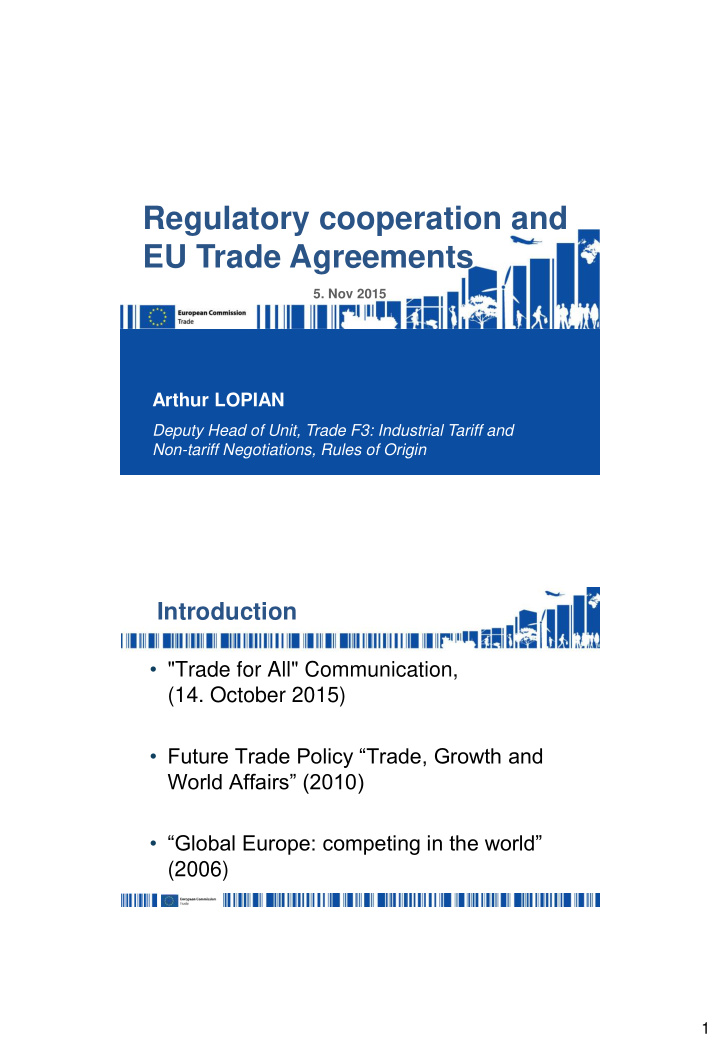



Regulatory cooperation and EU Trade Agreements 5. Nov 2015 Arthur LOPIAN Deputy Head of Unit, Trade F3: Industrial Tariff and Non-tariff Negotiations, Rules of Origin Introduction • "Trade for All" Communication, (14. October 2015) • Future Trade Policy “Trade, Growth and World Affairs” (2010) • “Global Europe: competing in the world” (2006) 1
Objectives of Regulatory Cooperation • Improving Market Access • Promoting common interest • Shaping future legislation • Improving existing legislation Fora • Multilateral • Bilateral DCFTA / "old FTAs" MRAs ACAAs / PECAs Regulatory Dialogues 2
Different approaches in bilateral agreements, FTAs • Within chapters (SPS/TBT/Institutional…) • Within Sector specific commitments (Annexes) • Horizontal Chapter on Regulatory Cooperation / Coherence Regulatory coherence/cooperation chapter See EU proposal of April 2015 at: http://trade.ec.europa.eu/doclib/docs/2015/april/tradoc_153403.pdf Scope: - Reaffirmation of good regulatory practices (GRP) - Mechanism to promote regulatory compatibility (regulatory cooperation) - Regulatory Cooperation Body/Forum 3
" Regulatory Cooperation Body" Body composed of regulators and other relevant officials. Functions: - Oversee and monitor the application of the regulatory provisions - Promote and coordinate cooperation among regulators, identifying oppportunities for cooperation - Contribute to the transparency of the regulatory cooperation process by consulting and by publishing its plans. BUT will have no regulatory or decision-making powers (no common rule making) Examples – EU FTAs with • Mexico / Chile • Korea / Singapore / Columbia, Peru • Japan • CETA • TTIP 4
Summary/Outlook • Need for mutual trust • Not subject to dispute settlement • Importance for common future projects 5
Recommend
More recommend